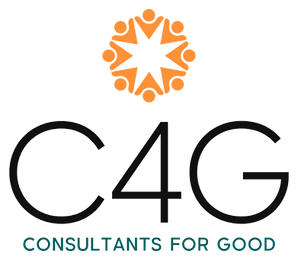In recent years, nonprofit organizations have been encouraged to embrace a new mindset. This groundswell of change invokes terms such as “performance outcomes” and “results measurement,” but focuses on one primary concept: accountability. As funding becomes increasingly competitive, the demands of foundations, government agencies, and benefactors have shifted accordingly. Specifically, the bar is being raised in the service sector, following trends in the corporate environment, for organizations to demonstrate their impacts in clear and meaningful ways.
We know that impact can take many forms: helping others create financial wealth, providing healthy meals that give the gift of better health, tutoring children to enhance academic achievement, developing employees to achieve higher job satisfaction, or creating beautiful works of art that feed the soul. Unfortunately, we often work hard and long, but are not able to demonstrate that desired impacts for our customers, clients, or program participants have occurred. There are numerous reasons why we may wish to show impact, rather than assume our efforts are creating results.
For example, impact measures give our organizations the competitive edge to gain supporters, investors, and referrals. To demonstrate this point, consider two nonprofit organizations that serve disenfranchised children. Both agencies expend tremendous effort providing educational services, such as tutoring, homework assistance, and time management techniques, to youth who are at high-risk for academic failure. In preparation for the next funding cycle, Agency One creates a detailed report of all services they have provided in the past year. While the data doesn’t include follow-up measures for program participants, the documentation for service provision is impressive: charts, graphics, and information galore. Agency Two provides similar services and wishes to compete for the same funds. While their program report is not as glossy, it includes a review of data that shows marked improvement for their participants, when comparing grades before and after participation in the program. If you worked for a foundation and had to make a choice between the two, which organization would you fund?
To develop programs successfully, it is also critical to remember that every organization has room for improvement. However, if you haven’t measured results, how do you determine the critical areas for enhancement? Imagine an attorney who senses that word-of-mouth referrals for her services are decreasing. The data that she routinely collects tell her that caseloads, billable time, and profits are all down. The attorney wants to improve her business, but where should she start? Is she too expensive? Do her clients think she is too aggressive, or perhaps not aggressive enough? Is her receptionist unprofessional? Does she have difficulty communicating with her clients? Are cases requiring too long to close? Without results measures, she is unable to effectively choose a course of action. Her next step could be the perfect solution…or a complete waste of time and resources.
The lesson: meaningful information is a powerful tool. Collect it, analyze it, and use it to let your true impact shine through.


